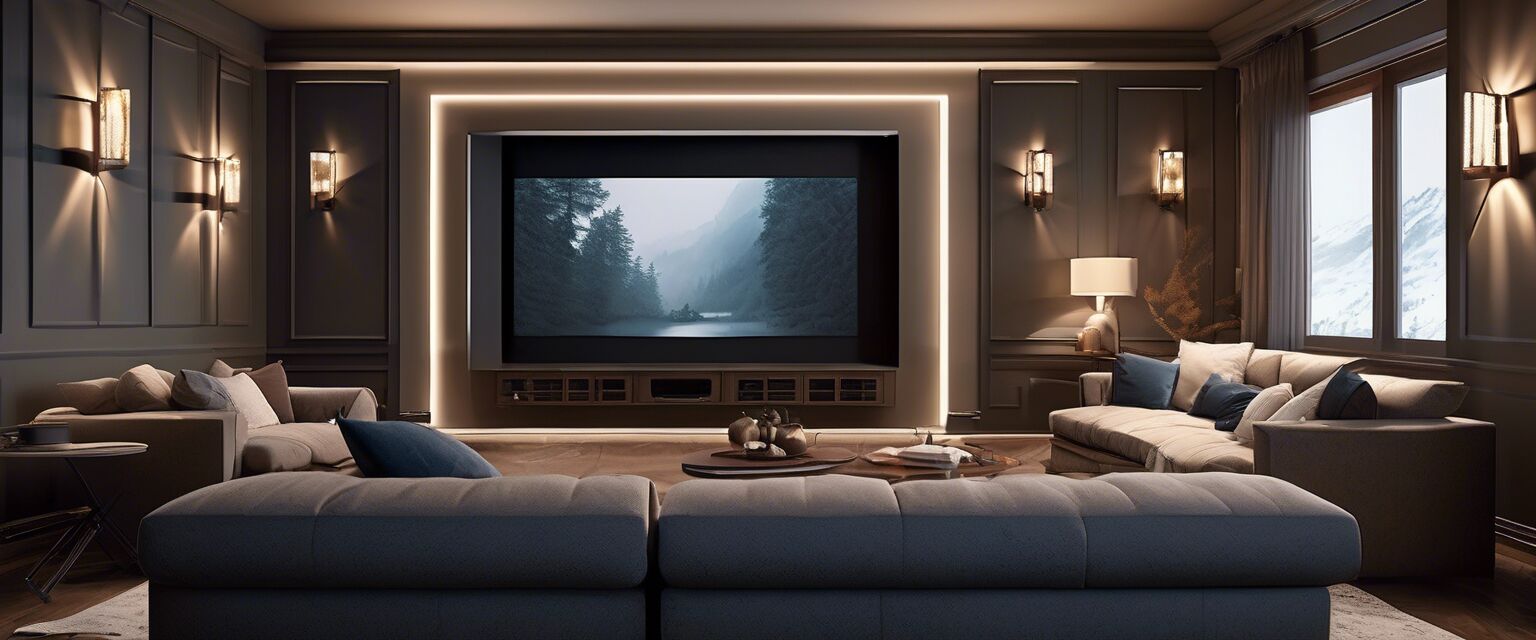
How to Create Effective Lighting in Your Home Theater
Key Takeaways
- Layered lighting is essential for a versatile home theater experience.
- Consider dimmable lights for flexibility in bright or dark scenes.
- Accent and task lighting enhance the aesthetics and functionality of your setup.
- The placement of fixtures matters; focus on creating a balanced environment.
Your home theater is a sanctuary for relaxation and entertainment. However, without the proper lighting, the experience can be diminished. Effective lighting can transform a standard home theater into a cinematic experience. This article will provide essential tips on designing an optimal lighting scheme that enhances your home theater experience.
Understanding the Importance of Lighting
Lighting plays a pivotal role in your home theater setup. It not only impacts visibility but also sets the mood and atmosphere. Here’s why you should pay attention to lighting:
- Enhances immersion: A well-designed lighting scheme can transport you into the movie or show you’re watching.
- Reduces eye strain: Proper lighting helps prevent discomfort during extended viewing sessions.
- Complements audio-visual effects: Lighting can work in harmony with sound to create a more engaging experience.
Types of Lighting for a Home Theater
To achieve effective lighting in your home theater, you should utilize different types of lighting:
| Type of Lighting | Purpose | Example |
|---|---|---|
| Ambient Lighting | General illumination for the entire room | Recessed ceiling lights, wall sconces |
| Task Lighting | Focused light for specific activities | Table lamps, reading lights |
| Accent Lighting | Highlight specific features or areas | LED strips behind the screen, spotlights |
| Decorative Lighting | Add visual interest | Chandeliers, unique fixtures |
Creating a Layered Lighting Scheme
A layered lighting approach combines different types for a flexible and inviting atmosphere. Here’s how to create one:
1. Start with Ambient Light
This is the primary source of light for your theater. Consider options like:
- Recessed lighting: Sleek and unobtrusive, provides ample general light.
- Ceiling fixtures: Can illuminate the space effectively while adding a decorative touch.
2. Add Task Lighting
This lighting is for activities like reading or managing equipment:
- Table or floor lamps: Place them strategically to allow comfortable reading without overpowering the screen.
- LED lights: Excellent for bedside tables or near control panels.
3. Incorporate Accent Lighting
Use these lights to highlight decor or create a more dynamic environment:
- LED strips: Install behind the screen or along shelves to enhance visuals.
- Spotlights: Focus on artwork or specific architectural elements for an aesthetic boost.
Lighting Controls: Dimmers and Smart Options
Adjustable lighting can significantly improve your viewing experience. Here are some options:
- Dimmers: Allow you to set the perfect light level based on the movie or scene.
- Smart lighting: Systems that can be controlled via smartphone apps or voice assistants, enabling convenience and customization.
Practical Tips for Implementing Lighting
To achieve the best results in your home theater, follow these practical tips:
- Plan your layout: Sketch out where you want your lighting fixtures placed before installation.
- Test different settings: Adjust the brightness and placement to see what feels right during several types of content.
- Use warm colors: Warmer light temperatures can enhance comfort and relaxation while viewing.
- Consider the screen's position: Avoid glare and ensure that lights do not overshadow the screen.
Common Mistakes to Avoid
As you design your lighting, keep in mind these common pitfalls:
- Ignoring placement: Lights should not create distracting shadows or glare on the screen.
- Over-illuminating the space: Too much light can detract from the cinematic vibe.
- Inadequate variety: Limiting yourself to one type of light can result in a flat atmosphere.
Conclusion
Effective lighting is a crucial component of your home theater experience. By understanding the different types of lighting, creating a layered approach, and avoiding common missteps, you can significantly enhance both the aesthetic appeal and functionality of your space. Remember to explore our other setup tips for a comprehensive home theater experience, including expert advice on acoustic treatments and home theater receivers that complement your lighting choices. With thoughtful planning, your home theater can become a true escape for entertainment.
Pros
- Creates a more immersive viewing experience.
- Reduces eye strain during long sessions.
- Enhances visual aesthetics and interior design.
Cons
- Can be complex to set up effectively.
- Higher costs for custom lighting options.
- Requires ongoing adjustments for optimal performance.

